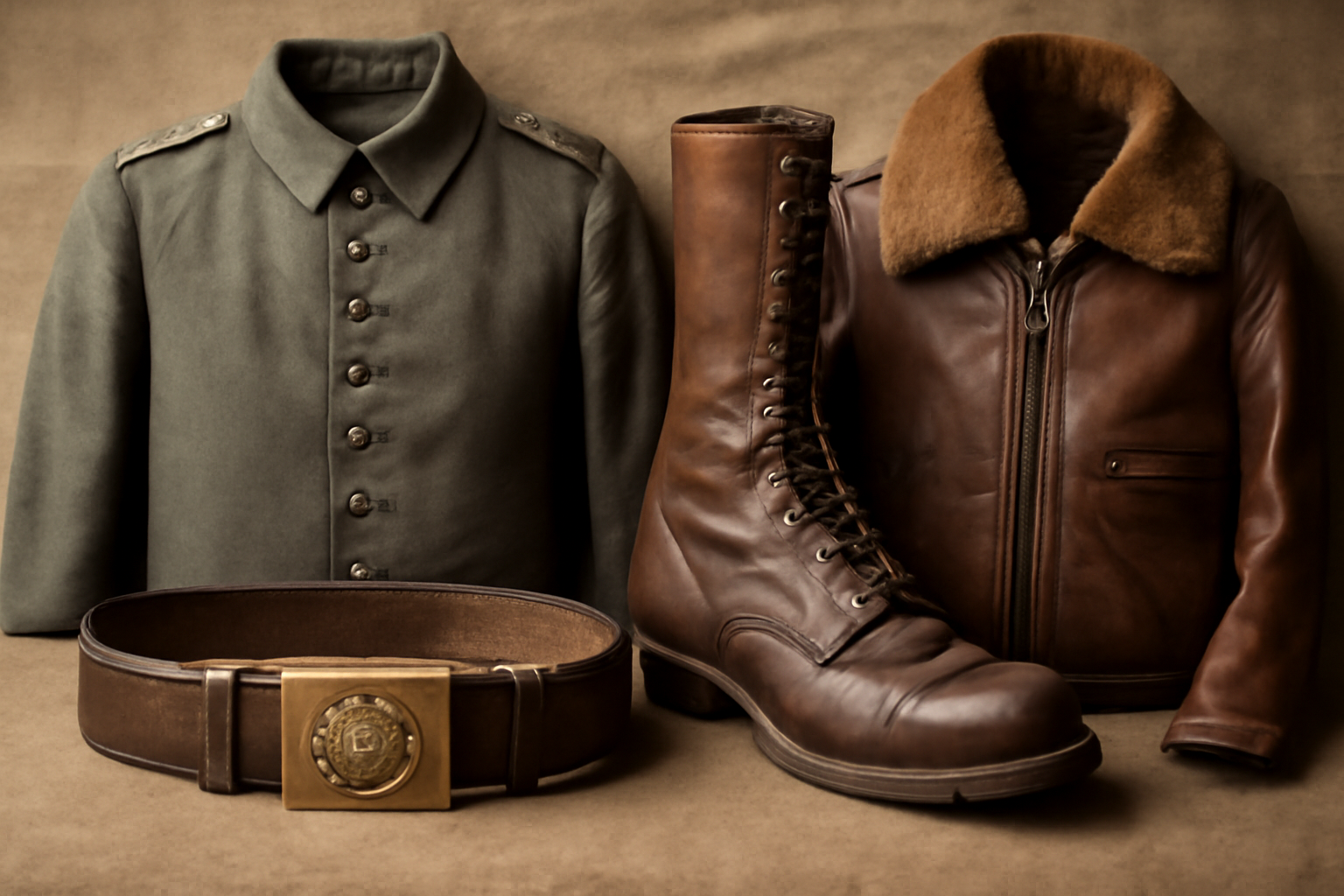
WW1 German Uniform Parts: Complete Guide to Authentic German WW1 Belts, Buckles, Boots & Flying Jackets
Published on May 28, 2025
WW1 German Uniform Parts: A Comprehensive Guide to Authentic Gear
Introduction
When it comes to military history, few uniforms hold as much fascination and detail as those worn by German soldiers during World War I. The distinctive elements of WW1 German uniform parts not only reflect the era’s military technology and design but also symbolize the soldier’s role and rank. For collectors, reenactors, or history buffs, knowing about the components such as the German WW1 belt, belt buckles, and related gear like boots and flying jackets is crucial.
At Paddelaters.com, we strive to bring you authentic and detailed knowledge about these iconic uniform parts. This comprehensive guide will help you understand the key components, their historical context, and how they evolved into WW2 gear.
The Core of WW1 German Uniform: The Belt and Buckle
German WW1 Belt
The German WW1 belt was a fundamental part of the soldier’s uniform. Made primarily from sturdy leather or canvas, the belt served practical and symbolic purposes. It secured the soldier’s gear, from ammunition pouches to sidearms, and provided a clean, uniform appearance.
- Material & Design: The leather belt was typically black or brown, depending on the soldier's unit and role. Canvas belts were lighter and used by different infantry and support troops.
- Width and Length: Usually, the belt was about 3 to 4 centimeters wide and adjustable for a comfortable fit.
- Wear and Tear: Authentic belts often show signs of use, such as scratches and discoloration, which can help collectors identify original WW1 pieces.
World War 1 German Belt Buckle
Perhaps the most recognizable piece of the uniform is the WW1 German belt buckle. These buckles were made from brass or steel and bore the imperial eagle emblem or other unit-specific insignias.
- Design Variations: The most common design features the “Gott mit uns” (God with us) motto along with the imperial eagle.
- Manufacturers: Many manufacturers produced these buckles, and slight differences in design and stamping help date and authenticate the pieces.
- Condition: Original WW1 belt buckles show patina or wear but are prized for their craftsmanship and historical symbolism.
Transition and Comparison: WW1 vs. WW2 German Belt and Boots
WW2 German Belt
As Germany moved into World War II, the uniform evolved but retained some elements from WW1. The WW2 German belt featured more durable materials and often came with a simplified buckle design.
- Material: The belts were sturdier, often using better-quality leather and steel buckles.
- Design: WW2 belt buckles generally featured the Wehrmacht eagle and swastika emblem, differing from the imperial eagle of WW1.
- Usage: These belts were standard issue for German soldiers across all branches, including the army (Heer), air force (Luftwaffe), and navy (Kriegsmarine).
German Military Boots WW2
Boots played a critical role in the German military uniform’s functionality. The German military boots WW2 were designed for durability, comfort, and long marches.
- Material: High-quality leather with reinforced soles.
- Style: They typically featured a high cut for ankle support and were laced up with hooks at the top.
- Legacy: These boots influenced modern military footwear design.
Essential Outerwear: WW1 Flying Jacket & Bomber Jacket WW1
WW1 Flying Jacket
Pilots and aircrew during WW1 needed specialized gear to withstand the harsh conditions in open cockpits. The WW1 flying jacket was a key piece of this gear.
- Material: Heavy wool or leather with fur lining for insulation.
- Design: Practical and warm, the jacket often included multiple pockets and straps to secure equipment.
- Significance: These jackets not only provided protection but became iconic symbols of WW1 aviation.
Bomber Jacket WW1
Often confused with the flying jacket, the bomber jacket also played a role in protecting airmen.
- Features: Bomber jackets were typically leather, with fur collars and cuffs to retain heat.
- Evolution: The style of WW1 bomber jackets influenced the more famous designs of WW2 and modern fashion.
Why Authentic WW1 German Uniform Parts Matter
For historians, reenactors, and collectors, owning authentic WW1 German uniform parts is about more than just aesthetics—it’s about preserving history. Each belt buckle, boot, or jacket tells a story of the soldiers who wore them and the battles they endured.
- Historical Accuracy: Using authentic or well-made replicas enhances reenactments and museum displays.
- Preservation: Understanding materials and manufacturing helps in preserving and restoring old pieces.
- Value: Authentic uniform parts often appreciate in value over time.
How to Identify Authentic WW1 German Uniform Parts
If you’re interested in adding to your collection or ensuring your gear is genuine, consider these tips:
- Material Check: Original WW1 belts and boots use specific leathers and metals.
- Markings: Look for manufacturer stamps, dates, and military insignia.
- Wear Signs: Genuine pieces often show natural aging like patina, fraying, or rust.
- Research: Cross-reference your items with trusted sources or consult experts.
Conclusion
Understanding WW1 German uniform parts like the belt, belt buckle, boots, and flying jackets is essential for anyone interested in military history or uniform collecting. These pieces not only hold historical significance but also reflect the craftsmanship and challenges of their time.
At Paddelaters.com, we offer detailed resources and authentic items to help you build your collection with confidence. Whether you’re looking for a German WW1 belt, a World War 1 German belt buckle, or want to compare them with their WW2 counterparts like the WW2 German belt and German army boots WW2, you’ll find everything you need here.
